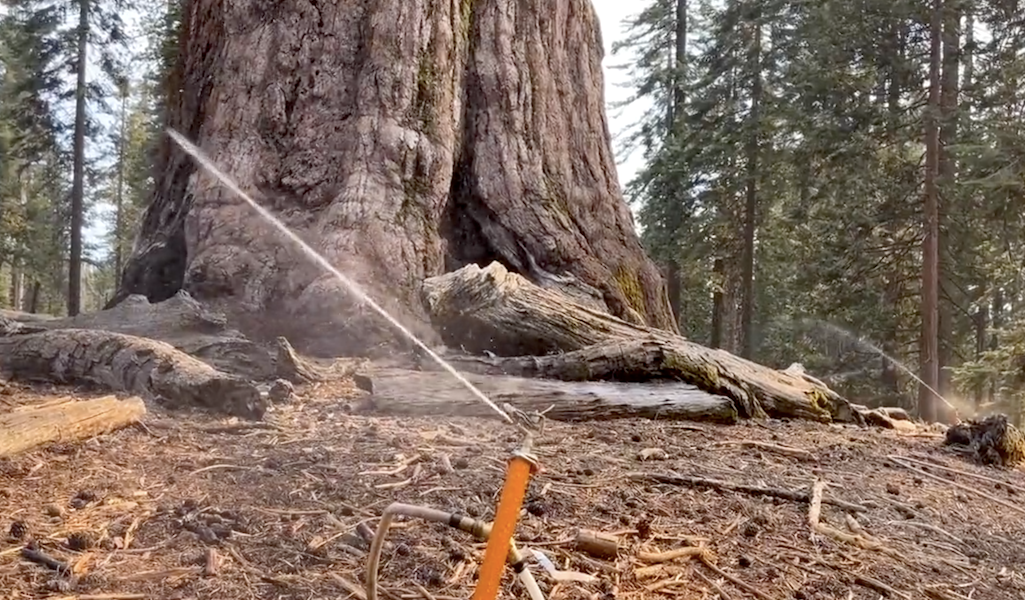
Sprinklers wet down the Mariposa Grove of Giant Sequoias/NPS
A wildfire threatening one of the world's greatest collections of giant sequoias has more than doubled in size in the past 24 hours, growing to nearly 1,600 acres with further growth expected in the coming days.
While the forests in the southwestern corner of Yosemite National Park have lots of dead timber to fuel the Washburn Fire, the footprints of past fires in the area could help slow the fire, according to fire bosses.
"The fire is burning in difficult terrain with continuous heavy fuels in and around the fire. Significant tree mortality from 2013-2015 has left significant dead standing and dead fallen fuels," the Sunday morning briefing paper said. "This also presents significant safety hazards to firefighters. Fire scars from past fires located approximately one to three miles from the current fire perimeter will assist firefighters in slowing the growth of the fire. Firefighters will continue going direct when safe and will scout and prepare indirect lines."
The fire was reported Thursday afternoon, and has grown quickly since then. As of Sunday morning it was measured at 1,591 acres; on Saturday it was reported to cover 703 acres. More than 350 firefighters were trying to scratch out containment lines. The Wawona Road [Highway 41] south of Yosemite West, and the Mariposa Grove were closed until further notice.
It was not clear how far the fire was burning from the Mariposa Grove of Giant Sequoias, which counts more than 500 mature sequoias. These massive trees can grow to be 300 feet high, 35 feet in diameter, and 100 feet in circumference. One of the grove’s largest trees, the Grizzly Giant, is 209 feet tall and an estimated 1,800 years old.
Firefighters had set up sprinklers in the grove to wet down the forest floor.
The weather forecast for the next three days called for a growing heating trend through the week that will help fire activity to continue to spread. "Once the fire reaches some of the recent fire scars, spread may slow, but fire will continue to burn into the fire scar with reduced intensity and increased dead and down fuel loading," the briefing document said.



Add comment